About this blog: Calcutta or Kolkata has always been a potpourri of cultures and traditions. Even before Calcutta was one of the major cities of the British Raj, second only to London, the city had welcomed people from various countries and origins. They arrived as traders and most of them stayed back accepting India as their own. Kolkata had once a thriving Jewish community. However what remains now of the Jews in Kolkata are a couple of schools, a bakery, a cemetery and 3 synagogues in Kolkata. In this blog, we will delve into history to recall about the Jews in Kolkata, their past and present. Also, in this blog we will take you through the synagogues in Kolkata. Well, these are things that you will not get in many Kolkata travel guides.
My first introduction to the Talmud – Torah was during my tenth standard text book through a story called “The Needle” by Isaac Bashevis Singer. But at that time I did not know that our very own Calcutta had a thriving Jewish community in the nineteenth century. Although in decline, there are a few landmarks built by the Jews in Calcutta.

Judaism was perhaps one of the first religions to arrive in India. The Jews first arrived in Cochin in India almost 500 years before the birth of Christ. Gradually through time the Jews settled around the ports like Cochin, Mumbai and Calcutta. The first Jews to settle in Calcutta were around 1798.
The Jews in Calcutta – Past
It was on the night of August 4, 1798 that Shalom ben Aharon ben Obadiah Ha-Cohen (Shalom Cohen), an ambitious young merchant, arrived in Calcutta with dreams of commercial opportunities in the city. He had travelled from his native land Aleppo in Syria to Baghdad and from there to Bombay and Surat to finally arrive at Calcutta, the hub of commerce and centre of power in British India. Cohen came with the objective of trading in silk, spices, indigo and Arabian horses. Long before him, Jewish merchants had been trading in Calcutta and they already had temporary residences in the city. However, the Jewish community finally settled only after the arrival of Shalom Cohen.

The Calcutta Jewish community is comparatively new to the thousand-year-old settlements in the western and southern part of the country. Most of the Jews in Calcutta trace their origins to Baghdad and Middle East and through them back to the Babylonian Jews. They came to India, just like others with the prospect of trade, along with the freedom from persecution periodically launched against them in the Middle-east.
Calcutta was then a hub of prosperity – a place from where no one returned empty handed. The early Jewish traders dealt in indigo, opium, cotton yarn, silk, precious stones, gold leaf, ivory, Veniceware and coffee. They provided links in trading from Shanghai in the east to London in the west.
Shalom Cohen
Shalom Cohen was a flamboyant and adventurous merchant. He had a colourful life and his fortunes underwent many ups and downs. It is said that debts had forced him to flee to the Dutch Chuchura and French Chandannagar. He even went to the Nawab of Awadh in Lucknow as a jeweler and to the court of Ranjit Singh in Punjab.
Though the Jewish community in Calcutta was set up by Cohen, it was consolidated by his son-in-law Moses Duek Cohen. Quite opposite to his father-in-law in nature Moses Cohen was an astute person and he is remembered for his dedicated service to the Jewish community. He played a leading role in framing the first Constitution of the community in 1825.
Moses Duek Shalom also established the first formal synagogue in Kolkata – Neveh Shalom (Abode of Peace) in 1826. He also built the Bethel Synagogue that stands in Pollock Street till today.
In 1799, the Jews in Calcutta were a meager 15 in number. By 1825, the number rose to 200 and by the end of the century there were almost 2000 Jews residing in Calcutta. Ironically, today, the number of Jews has dwindled and there are now merely 20 of them residing in Kolkata now (as of 2021).
By the end of the nineteenth century, many of the wealthier members of the community started adopting Western dresses, etiquette and the English language. The Jews in Calcutta served in British administrations, they were Sheriffs and Magistrates. Many of them served in the British army too. The Jewish women too were well educated and light bearers in their field of work. Many of them were doctors and teachers. In the 1880s, Calcutta saw a number of Jews schools like the Jewish Girl’s School, Elias Meyer Free School and Talmud Torah for the boys.
Ezra – the prominent Jews of Calcutta
The name of Ezra is associated with a number of prominent buildings in Kolkata. David Joseph Ezra had made his fortune in trading and he invested much in real estate. His firm traded heavily with British, Indian and Chinese clients and he acted as an agent for Arab ships arriving in colonial Kolkata from Muscat and Zanzibar. Calcutta’s most imposing buildings like Ezra Mansion, Esplanade Mansion, Chowringhee Mansion and Ezra terrace were owned by him. Ezra Street in Kolkata (which is now known for its electrical and light market) is named after him.

His son, Elias David Ezra was Calcutta’s first Jewish sheriff. Elia David Ezra commissioned the construction of Maghen David Synagogue (Shield of David) in 1884 in memory of his father. Magen Daivd Synagogue in Kolkata is one of the largest and most beautiful synagogues in the East.
The decline of numbers of Jews in Calcutta
The decline of Jews in India can be attributed to 2 historical events which occurred within a short span of time – India gained her independence in August 1947 and the new Jewish country Israel was formed in May 1948. After Indian independence, the Jews were unsure of their future in India and most of them left for Israel, their own Promised Land. Among those left, the current generation have all moved to Israel while others have sought greener pastures and moved to the USA or Canada. Today there are almost 100,000 Jews of Indian origin living in Israel.
The Present
The Jewish community in Kolkata which once thrived and grew is now on decline. During the nineteenth century, there were about 6000 Jews in Kolkata, but today the number has declined to only 20 and half of them above 70! And there are three synagogues, a cemetery at Narkeldanga, two schools and a bakery. The Jewish Girl’s School is located in Park Street, the Elias Mayer Free School and Talmud Torah in Bowbazar. For many years, there are no Jewish students or teachers in these schools and now they are mostly attended by Christian and Muslim students.
Nahoum’s Bakery, the only Jewish bakery in Kolkata, however, continues to thrive. This bakery was formed in 1902 and is still famed for its rum balls and cheese puffs. Even today, Kolkatans queue up before Nahoums for plum cakes during Christmas and easter eggs during Easter.
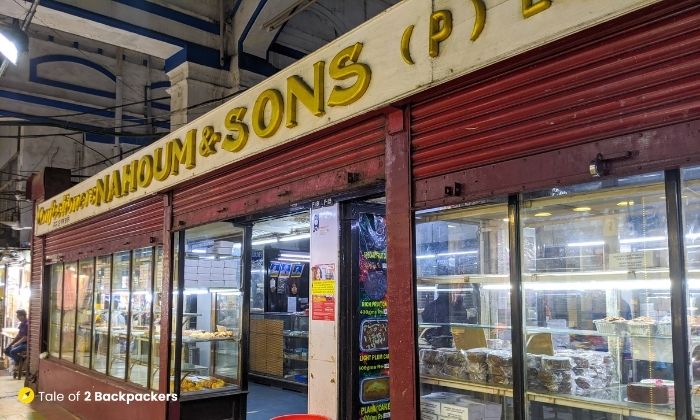
Maybe in another decade, the Jews in Kolkata will only be a memory seen only in the imposing buildings, synagogues and schools that they had left behind. And we will remember them by the streets that were named after them and through Nahoums. The rich Jewish culture and legacy might disappear from the city in a few decades.
A Few Facts about the Jewish Community in Kolkata
- The famous Ezra Street was named after Elias David Joseph Ezra, a real estate businessman. The Belilios Street and the Synagogue Street are also named after the Jews.
- Ezra Mansion and Ezra Hospital are the other architectures built by the Jews and still bearing Jewish names. There are other mansions and buildings built by the Jews but no longer bearing their name, examples being the Chowringhee mansion and Esplanade Mansion.
- Arati Devi, the Bengali actress of the Silent era was an Jewish lady named Rachael Sofaer based in Calcutta.
- Esther Victoria Abraham whose screen name was Pramila was a well known face in Bollywood in the 1930 and 1940s. She was also the first Miss India. Her daughter Naqi Jahan also went on to be Miss India in 1967.
- Ezra Mir, or Edwin Meyer was an actor and India’s most prolific documentary filmmakers.
- The famous Nahoums confectionery at New Market is a Jewish Shop. The plum cake which we buy during Christmas is actually a Jewish recipe!
- There are 2 Jewish schools in Kolkata – Jewish Girl’s School in Park Street, the Elias Mayer Free school and Talmud Torah in Bowbazar. The last of Jewish students passed out from these schools almost 3 decades ago.
- Kosher red wine was made locally in Calcutta till the early 1970s, when Isaac Agha Baba passed away. He was the only one who knew how to make the wine and ensured it was kosher.
Synagogues in Kolkata
The Jews had found their home in Calcutta since the 1790s. Gradually they settled in the city and very soon they needed a place to pray. They rented a hall from the Armenians. Later a house was purchased at the junction of Canning Street and Brabourne Road and it became the Neveh Shalome Synagogue in 1826. Later this simple synagogue was demolished and in its place the magnificent Magen David Synagogue was built. Later Neveh Shalome was rebuilt just beside Magen David Synagogue keeping in line with the old synagogue.
The synagogues in Kolkata are a testimony to their origin, rise and decline in the “City of Joy”.
The Jews had built 3 other synagogues in Kolkata in course of time – Beth El Synagogue in 1856, Magen Aboth Synagogue in 1897 and Shaare Rasoon Synagogue in 1933. Today, only 3 synagogues stand while the other 2 have been lost in the annals of time.
Magen David Synagogue
Address: 19, Synagogue St, China Bazar, Barabazar Market, Kolkata, West Bengal 700001

The Magen David Synagogue touching the skylines of Kolkata stands at the busy junction of Canning Street and Brabourne Road. You could hardly see the gate of the synagogue as the gate is flanked by shops selling accessories and junk jewellery. But you will probably not miss the tall clock tower. Skeptics often mistake this synagogue in Kolkata as a church. But once you set your foot inside, you will be simply awed by the magnificence of the interiors. Magen David Synagogue is undoubtedly one of the finest synagogues in Asia.

Though this synagogue is the youngest of the three synagogues that are left in Kolkata, I mention this first because of its sheer opulence. This synagogue was built on a grand scale by Elias David Joseph Ezra in memory of his father David Joseph Ezra. The synagogue was designed by a Christian in the Italian renaissance style. This explains the huge clock tower, 42 metres (140 feet) high dominating the Kolkata skyline. Also known as the Star of David, the synagogue boasts of high ceilings, ornate pillars with their pediments imported from London.

We reached the main gate and entered the premises. Finally we were in front of the imposing structure. The synagogue is approached through an arched door containing the hexagonal Star of David and a few Hebrew inscriptions.
The interior of Magen David Synagogue is simply astounding. The floor has black and white chequered tiles in some places and mosaic designs in some others. The hanging chandeliers give the place a striking look and the coloured glass panes in the window complete the impressive atmosphere.

In the middle of the hall there is a raised pulpit where the Rabbi (the Jewish priest) preaches. This is one of the major differences between a church and a synagogue. At the far end of the hall, there is a raised platform which has a semi-circular dome and three curtained doors. In the centre, there are 2 tablets depicting the “Ten Commandments“. Behind the doors are the Torah scrolls and holy artifacts. These are not for public display.

The half-dome is dark blue in colour and is studded with stars and contains several Jewish inscriptions and iconography including the seven-branched lampstand of Menorah. There are wooden stairs on the left and right of the door that leads to a gallery with seating arrangements for the ladies of the congregation. There are seating arrangements in the main hall as well.

Once, Magen David Synagogue in Kolkata had a fine collection of Torah scrolls. But as the community left Kolkata, they took the scrolls with them. Most of them are now found in Israel and some of them have also travelled to the USA and UK. Now only 4 remain in Kolkata, with 2 in Magen David Synagogue and 2 at Beth El Synagogue.

An interesting fact is that the caretakers of the synagogues in Kolkata are all Muslim. In a polarizing world where Jews and Muslims are pitted as opposing communities, the same cannot be said in Kolkata. The interstate Arab-Israeli conflict could not diminish the trust and reverence they have for each other in Kolkata. Our guide, Mr Rabiul Khan was one of the caretakers of the synagogues in Kolkata. Mr. Khan’s forefathers were also the caretakers of this place.

Earlier, Magen David Synagogue and the other synagogues in Kolkata were a place for worship of the Jewish community in Kolkata. However, now no congregations are held. Regular services had stopped almost 15 years back. From a population of nearly 6000 in the nineteenth century, their number now stands at around 20 only. It is now difficult to find the “Minyan”, the minimum number of adult men (usually 10) required to conduct a service in the synagogue. With their dwindling numbers, this is quite a feat now. Also most of them are now aged and cannot come to this place on a regular basis.
Currently, Ms. A. Cohen, the general Secretary of the Jewish community affairs in Kolkata visits the synagogues every Friday evening and Saturday to light the holy lamp.

Trivia: Magen David Synagogue narrow escaped demolition during the construction of Howrah Bridge. However, now the Magen David Synagogue has been declared a national heritage by the Government of India and is now looked after by the Archeological Survey of India. But it is the caretakers who actually look after the place.
Some Facts about Magen David Synagogue Kolkata
Earlier, permission was required to visit the synagogue from Nahoums Confectioneries, New Market. Currently, permission is to be taken from Ms. A. Cohen, the general Secretary of the Jewish community affairs in Kolkata.
Presently, no permission is required, but you need to carry an identification proof with you.
Neveh Shalome Synagogue
Address: 9A, Indra Kumar Karnani St, China Bazar, Kolkata, West Bengal 700001

Neveh Shalome Synagogue is the oldest synagogue built in Kolkata. After an overwhelming visit to the Magen David Synagogue, we ventured for the other two synagogues of Kolkata. The Neveh Shalome Synagogue was built by Shalom Obaida-Ha-Cohen in the memory of his father Shalom Ha-Cohen.
The land near Burrabazar was purchased in 1825 and the synagogue was built in 1826. The Neveh Shalome is not as ornate and magnificent as the Magen David Synagogue which is situated right beside it. The entry to the synagogue is through a domed arch whose door is now hidden by the myriads of shops in front of the gate.

The Neveh Shalome synagogue was built as a simple prayer hall. It was later demolished in 1884 and the Magen David Synagogue was built in the same place. But in 1910, the synagogue was rebuilt by the Calcutta Jewish community beside the Magen David Synagogue. The prayer hall was kept simple and soon services resumed in this synagogue too.
The synagogue consists of a simple prayer hall with rows of seating arrangements for the congregation. There is a central podium and a half dome at the end of the altar. But here the half-dome is simple and not decorated with stained glass windows. Like the other synagogues, this also has an upper floor. However, here you will also find an altar (known as “Hoopa”) where Jewish marriage ceremonies were held. Our guide Masood informed us that the last marriage that took place here was in 1982!

The Torah (religious text of the Jews) which was kept in Neveh Shalome has long been taken to Israel. Masood informs us that general services and Sabbath are no longer held, but the community tries to meet on special occasions like the Jewish New Year.
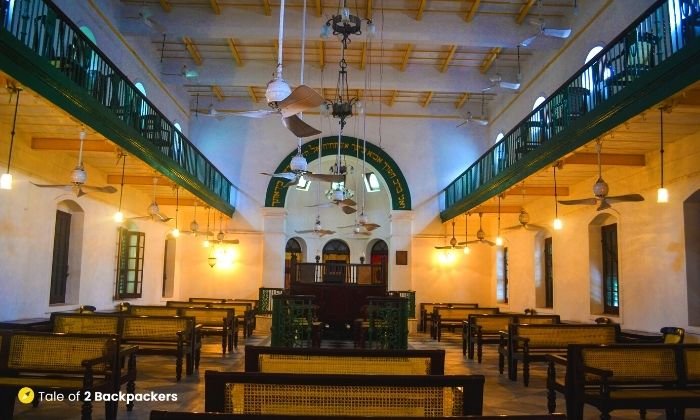
With the diminishing number of Jews in Kolkata, services gradually stopped in the synagogues and they were left in neglect. In 2000, the Beth El and the Magen David Synagogue were declared heritage sites by the Archeological Survey of India (ASI) and brought under the wings of the ASI. But the Neveh Shalome did not come under the heritage tag and remained neglected. It was later the Jewish community of Kolkata took the onus to restore the Synagogue.
Beth El synagogue
Address: 26, Pollock St, Chitpur, Barabazar Market, Kolkata, West Bengal 700001

Beth El synagogue is situated in Pollock Street, one of the busiest roads in Kolkata. The place is surrounded by shops and thousands of people walk down the road giving the yellow gigantic structure a miss. In fact, on a busy day, you will see the white marble stairs of the building inviting you, but will barely notice it. So after visiting the Magen David Synagogue and the Neveh Shalome Synagogue, we walked down the busy Pollock Street looking for Beth El.
Beth El stands tall with an arched entrance. Above the arch there is a glass panel having an elegant pattern. The glass panel is flanked by the Jewish Star of David and the Star of Menorah (symbol of Israel).

At the top there is a clock with a black dial on which time has taken its toll! As we climbed the marble stairs and entered the room towards the left, we saw the large portrait of David Joseph Ezra, the business tycoon who is said to be the builder of many prominent buildings of Calcutta including the Ezra building. Built in 1856, Beth El literally means “the House of God“.

Beth El Synagogue had imbibed many Western motifs in its architecture which includes the large blue, white and red flowered patterned stained glass window above the entrance. The interior of the Beth El synagogue is simply outstanding. It has long slender columns with beautiful designs. The chandeliers hanging add to the grandeur of the place. Here also, the floor has a checkered design. In the middle of the hall, there was a raised platform for the Rabbi to pray and preach.
Like the other synagogues, there is an altar at the far end with a semicircular dome towered over by large windows made of colored glasses. Inside the half-dome is coloured blue and star-studded. There are inscriptions written in Hebrew on the dome that include prayers from the Torah and the Ten Commandments. One of the main attractions of Beth El Synagogue is the stained glasses that are placed atop the main entrance of the synagogue. You can view the glasses from the balcony opposite the altar.
A flight of stairs leads to the upper floor. The upper floor has now been transformed into a mini museum where the history of Jews in Kolkata has been depicted through photographs
The holy Torah is placed at the Beth El synagogue. To view it, permission is required from Ms. A Cohen, Secretary of the Jewish community Kolkata.

Magen Aboth Synagogue was located in the Tiretta Bazar (Old Chinatown) region. It was demolished and replaced with an apartment. A plaque on the entrance of the apartment mentions the Magen Aboth Synagogue.
Shaare Rasoon Synagogue was a simple prayer hall located in a house at the crossing of the Sudder Street and Free School Street. The house still exists but there is no trace of the prayer hall.
It all started with a handful of merchants coming to trade in India. They ended up building a community. Now after years of thriving successfully and contributing immensely to the city that embraced them with open arms, the Jews left in Kolkata can now be counted. The few Jews living in Kolkata consider Kolkata their homeland.
Pin this for a later read!





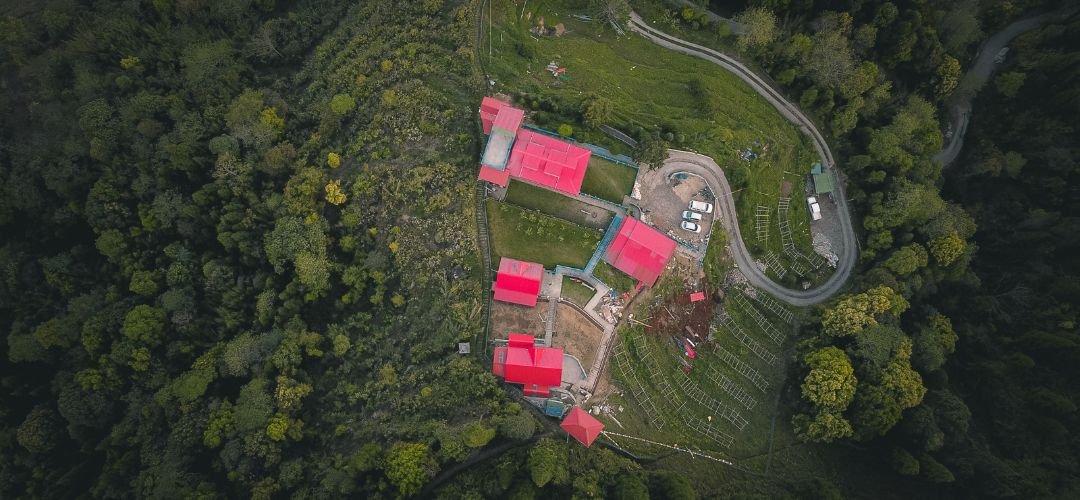


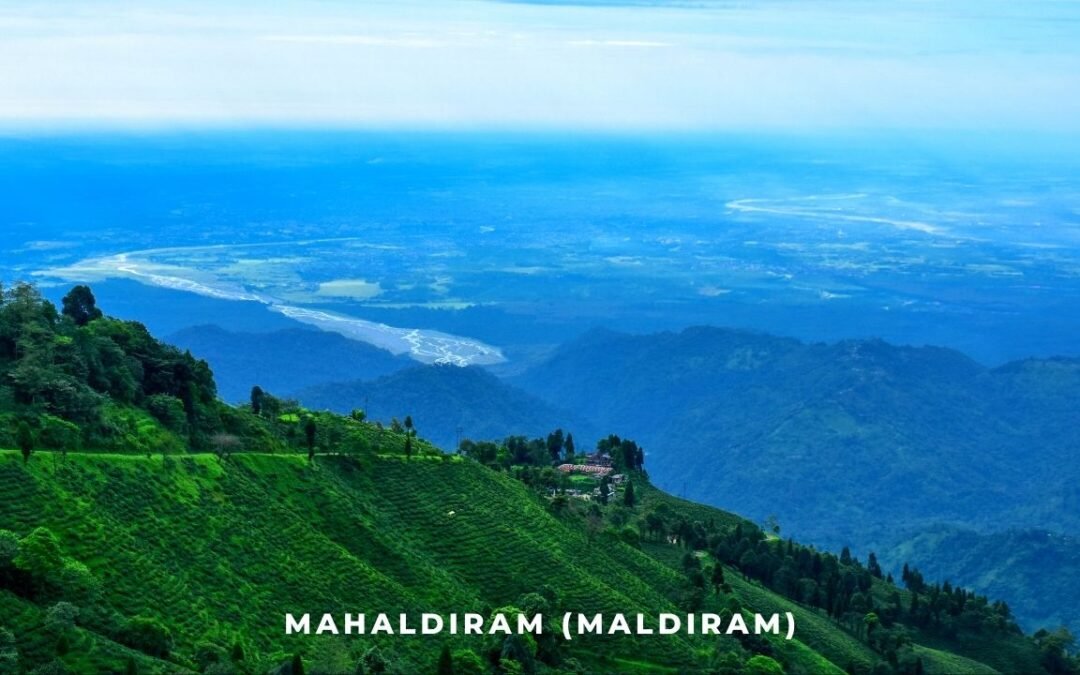
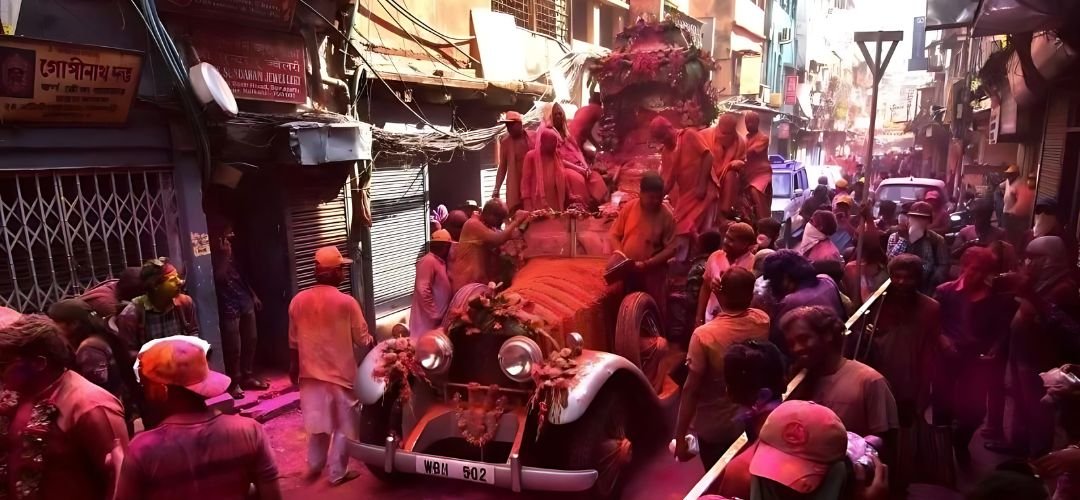
Wow, I’ve seen this building many a times but like you said people mistake it to be a church. Thanks for sharing else I would have never known.
Looks splendid, surely worth visiting and spreading the word.
Dear Agni and Amrita, thanks for you wonderful writeup on Magen David Synagogue, the grandest Synagogue of Asia.
Also I had the pleasure of reading your blog posts on the other two synagogues and the post on Jewish Kolkata.
I think you are still left with the Jewish Cemetery in Phool Bagan please do visit it make the series complete.
Happy exploring Kolkata and happy blogging…..
Thank you Rangan da…
Your comments will definitely inspire us to travel and write better.
Pretty nice post. I just stumbled upon your blog and wished to say that I’ve really enjoyed surfing around your blog posts.
In any case I will be subscribing to your feed and I hope you write again very soon!
Excellent narration with nice photographs !! Keep blogging
How to get the permission? Can you give the details?
Beautiful Synagogue! Looks very serene and peaceful… good pictures of the place!
What a beautiful synagogue. In all my years in Kolkata I missed it! The great thing about Kolkata is, there is so much of heritage in every corner…